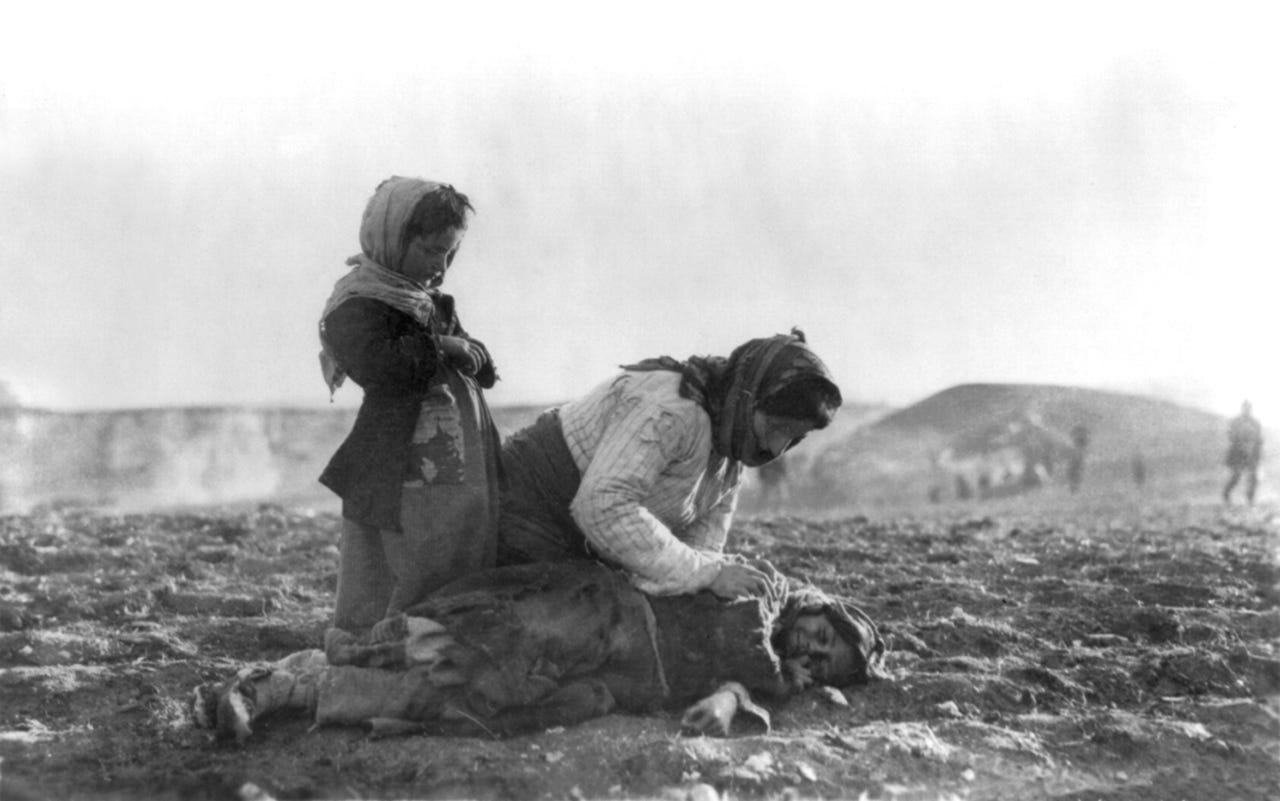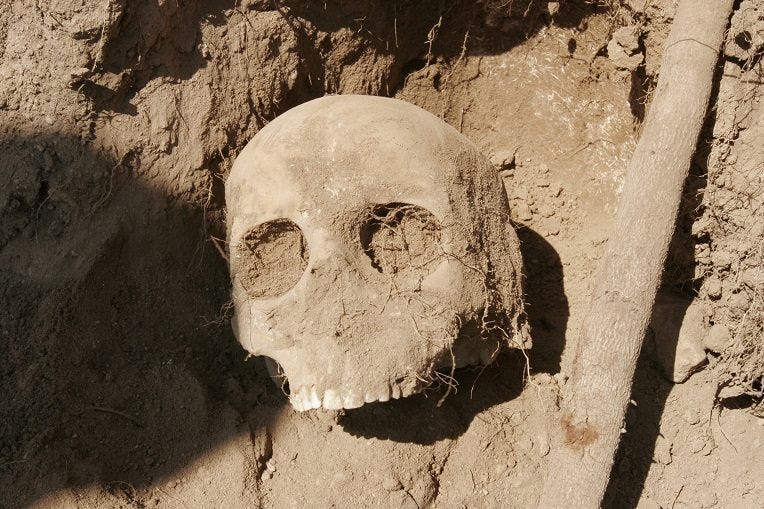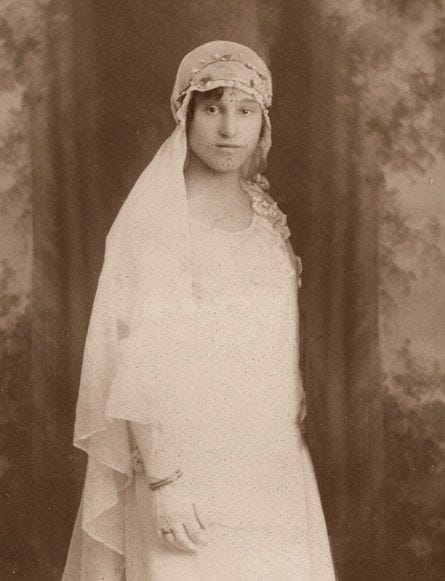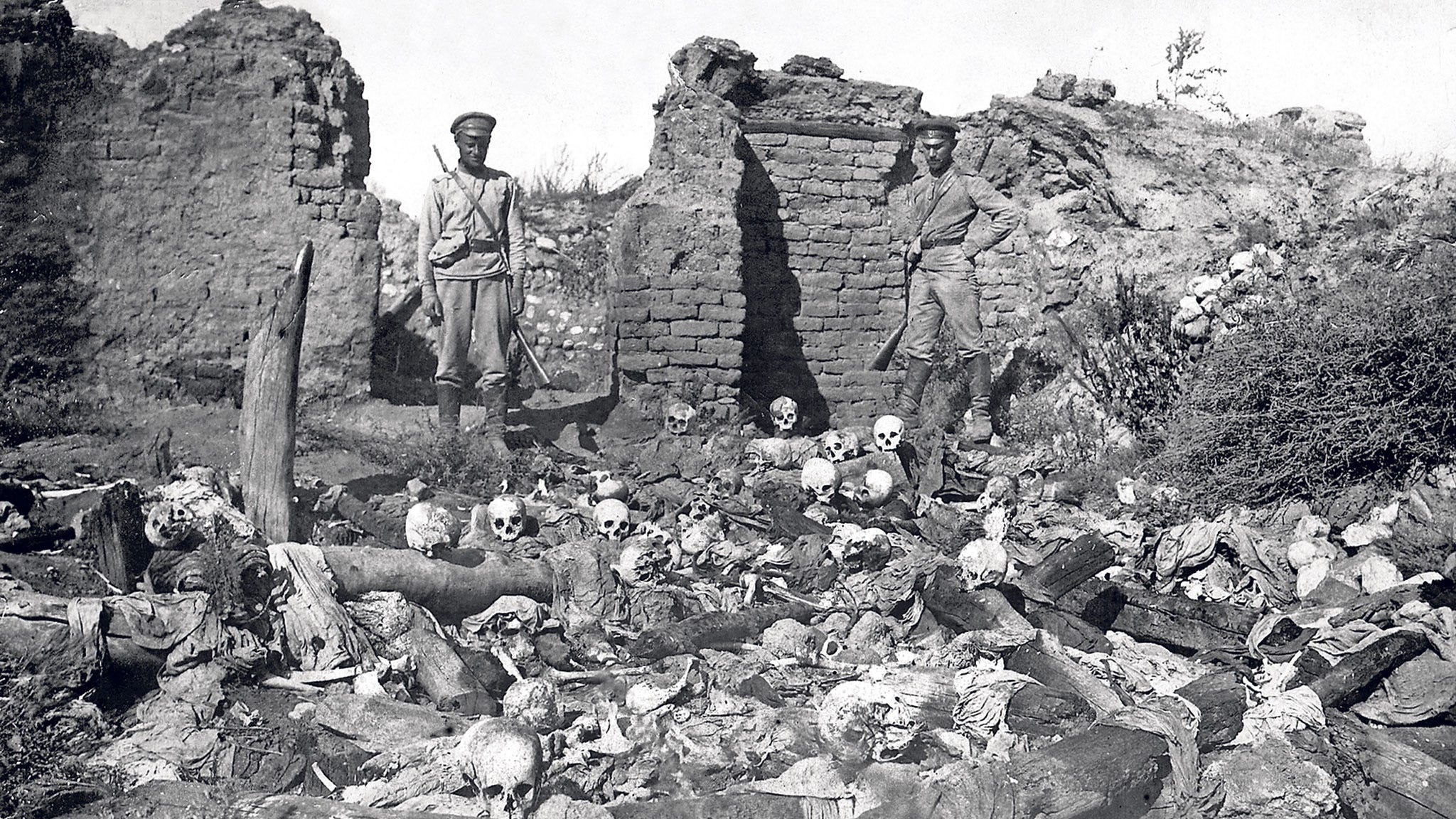Berkana - Her Hungry Skin with Star and Moon
Today’s pickings Her Hungry Skin with Star and MoonStories of the Forgotten Armenian Girls Enslaved by the Ottoman EmpireDear Reader, Welcome to Berkana, your cultural mirror to everything obscure and hidden in the shadows of the past. The last few weeks have been toiling for me in terms of personal commitments and duty calls. I have been searching for the steadfast mast of creativity in midst of chaos. I have asked this question to my friend Renee Faber, in response to which she wrote this beautiful meditation on finding courage holding the torch of compassion. So, after a long spell of creative block, I am finally able to push through. I am gradually bringing back the discipline to write despite disruptive mental noise. The next goal is to stay in practice and not lose momentum. I want to thank you all for supporting and being with me on this journey because it is you dear reader, who pull me back to my center of creative power. Your encouragement has inspired me to create some of my best works. I am grateful and hopeful that you will hold on till I navigate through this difficult phase of block and step on stable stones of practiced discipline. Like I promised last time, I am working on a project that dives deep into the tattoo history of the Balkan people. With this project, I have finally reached a humungous wall of information deficit. This is a real obscure piece of history that we are going to investigate. I am excited about this body of work as it is going to be both significant and novel. So stayed tuned in while I bake this recipe of wonder and shock in Berkana’s flame of authenticity. Many have inquired about my research method, and how I formulate and derive the topics spanning a range of different cultural paradigms. My answer is curiosity. It is my constant practice to stay curious and open to the flow of information that comes my way. I study the information at hand and derive the ancient and rare gems of wisdom hidden within them. While researching the ethnic Balkan tattoos, I stumbled upon another rare and forgotten piece of history. When I sifted the content through the mesh of criticism, what came out on the other side is jarring. I learned about the twisted truth behind the horrific Armenian holocaust by the Ottoman Empire and the oppression of the Armenian people by the neighboring Muslim majority before the first world war. It broke my heart and propelled me immediately into a state of awe for the silent strength and integrity with which the Armenian people poised themselves in face of atrocious and systematic erasure of their culture and identity. History, especially the history of body art like tattooing is a subject that is often studied in reverse. It starts with the marks on the flesh and takes us back in time to where those marks were obtained. And here I am researching about a handful of tattoos that took me down a wormy rabbit hole. So I played some melancholic cries of Armenian Duduk on Apple Music and settled down to write about the unacknowledged sufferings and history of the Armenian genocide. Now, without further ado, let’s dive in. Fevered memories of a GenocideArmenia is a landlocked country situated at the Transcaucasus, the border of Eastern Europe and Western Asia. It shares its border with Georgia in the North, Iran in the south, Azerbaijan in the East, and Turkey in the west. Thus holding a unique cultural and geopolitical status in Eastern Europe. The Armenian terrain is a topological wonder consisting of mountains, valleys, forests, and fast-flowing rivers, contributing to its unique highland continental climate. A constant tug-of-war between the Mediterranean Sea and the Black Sea manifests seasonal variations ranging from hot summers to cold and snowy winters. Armenia’s rich geographical and cultural heritage has time and again stood rock solid in face of a great many wars waged by invaders. Back in the early 1900s many Armenian Christians lived peacefully in faith and harmony for many generations in the east of the Ottoman territory. But the roots and identity of Ottoman Armenians were soon to shake in the wake of cruel Ottoman tyranny. The systematic obliteration of Armenian people started in the spring of 1915 after the paranoid Ottoman Empire lost a series of battles and significant territories to the Balkan states. The paranoia kept growing among the political leaders of Turkey, who feared a rebellion among the Armenian population living in the eastern provinces of Turkey. The fear was that the Armenians would seek independence from this integral part of the Ottoman territory. The Ottoman leaders took the isolated incidents of Armenian resistance as an indication of a full-blown rebellion, whereas no such revolts ever surfaced. The authorities started mass deportation of the Armenian population to stall any possible effort made towards Armenian autonomy. On 24 April 1915, hundreds of Armenian leaders and intellectuals were arrested and deported from Constantinople. Around 1.5 million Armenian civilians including, women, children, the sick, and the elderly were sent on their death march to a Syrian desert in 1915 and 1916. This task was driven by the Kurdish paramilitary forces, who eventually committed crimes against humanity by depriving the civilians of food, water, and aid. Millions were robbed, mutilated, raped, and killed in the Syrian desert, and the survivors were dispersed to their gradual deaths in Syrian concentration camps. By the end of 1916, the massacre left around 200,000 Armenian women and children alive who suffered a reign of ethnic cleansing. They were forcibly converted to Islam. The women and young girls were raped to impregnate and bear Muslim children and eventually integrated into the Muslim households where they lived as sex slaves and concubines to their Kurdish and Turkish masters. Two million of Armenian civilization were wiped out clean, lost their home, identity, and culture, and remained the nameless and faceless victims of this Turkish monstrosity. As of 2022, only 31 countries and a handful of historians have recognized these events as genocide. But the rest of the world still lives in denial of this horrendous crime, including the government of Turkey, which still fails to apologize or take any responsibility for destroying the lives of millions of Armenians. However, whether it is admitted or not, this series of mass exodus and killings is rightfully the first genocide of the 20th century. Women are the prime targets during any war because they hold the center of cultural and spiritual significance for their people. In most cultures, women’s chastity is a direct representation of a community’s dignity. Therefore, they are strategically targeted, reviled, and humiliated by the enemy to break their opponent’s spine of courage. Rape and enslavement are essentially war strategies to establish the towering source of power by the offensive side. The crimes are sexual, but the root of war rapes is established on the ideological value placed on women’s sexuality. Every war has hidden layers of oppression and crimes committed on the vulnerable for the enemy to reinforce their strength and re-establish the power dynamics. This war strategy is directly adapted from the natural world of wild predators and imitated into the human world to remain at the top of the pyramid by asserting power and generating fear. The strategic weapons of oppression are effective to control those who feel any urge to revolt against a tyrant. Using his leash of fear, the tyrant whips control and obedience within the masses. Therefore every war response is to dismantle the power structure and tell the tyrant that people are not afraid anymore, that they are ready to face the fear despite the foreboding consequences. Marks of OppressionThe Armenian Genocide has very less surviving physical documentation. Much of what remains of this haunted memory is concealed behind the closed doors of the Armenian Genocide Memorial complex. The memorial was built in 1967 on the hill of Tsitsernakaberd in Yerevan to remember and honor all the innocent Armenians who lost their dignity and lives in hands of ruthless tyrants. Another living physical proof of this horrific past is stranded in the Syrian desert of Margedeh, which is a site of an Armenian mass grave. The desolate desert swallowed up an important proof of the massacre except for the bones of millions of Armenians staring out of history’s obscure shame. Hidden in the angry dirt of this Syrian desert are the bones of the ancestors of new generations of Armenians living in the peaceful free world today. Buried in the ephemeral sands are the pain and humiliation that their ancestors resisted and eventually succumbed to. But the worst pain of the holocaust was not due to the systematic erasure that the Ottomans started in 1915, but because of the silence of apathetic denial that still echoes within Turkey in 2022. As an Armenian American, National Geographic photojournalist, Alexandra Avakian, said in one of her photo-essay blogposts on the Armenian genocide
However, not every trace of crime is erasable, some shreds of evidence are more deeply etched into the fabric of reality like that of ottoman tattoos on the skin of young Armenian girls reclaimed by the Allied forces in the deserts of Syria. It all started with one woman’s obsession with her Grandmother’s tattoos and her quest to unveil its unknown origin. Suzanne Khardalian always remembered her grandma as a bitter woman who resented everyone and everything. She knew Grandma Khanoum to be a 'wicked woman' who swore at her husband, despised her grandchildren, was miserable most of her life, and found her only refuge in Armenian folk music. And yes, the tattoos that looked like they were memories of a strange and forgotten land from a bad dream. But out of all things that Suzanne knew her old lady to be, she never knew her to be a victim. After years of her grandma’s demise when Khardalian, now a filmmaker and Swedish citizen through marriage, stumbled upon a long lost document prepared by a social foundation on young Armenian girls and children who were rescued from the Syrian desert between the years 1919-1926, she immediately bridged the gap. The photographs of the girls had an uncanny resemblance to her own grandmother’s face, the haunting sadness in their eyes, the strange marks etched on their faces reminded Suzanne of her grandmother's tattoos. Those photographs filled her with unease and horror, the possibility that perhaps her family’s lack of knowledge about her Grandma’s past was indicative of her obscure young years poisoned and marred with oppression and slavery. This also indirectly explained her Grandma’s repulsion to physical contact and her misanthropy. Suzanne goes on a quest to discover her Grandmother’s past and discovers a series of horrifying truths about her Armenian ancestry. She documented her entire journey in her film Grandmother’s Tattoos, a riveting story of suffering and reconciliation of her history and ancestry. What she exhumed from the marks, perhaps forcibly etched on her Grandmother’s flesh, were the unrested ghosts of the horrendous genocide and the pervasive pain that its denial still causes the new generation of modern Armenians. She realized that the faded yet delicate designs of stars and moon on the back of her Grandmother’s fingers are the signs used to mark the Ottoman slaves. The intricate etchings are the actual remnants of violence demanding acknowledgment under muffled screams. In an interview with the Armenian Weekly, Suzanne narrated this history with resonance and poise. It was a deeply personal narrative of her Grandma’s past and inevitably her past too - a past so dark and dangerous that no one should have to bear its sharp-edged memories rooted in pain and indelible suffering. In her own words, Suzanne said,
And when asked about how she felt about the marks on her Grandma’s hands and face, when she was younger, she said
The Perpetual PastApproximately 90,819 young Armenian girls and children were forced to survive as prostitutes, were forcefully raped, and impregnated to bear Muslim children. They were tattooed by their abductors as a sign of belonging, as a permanent mark of submission and humiliation. These girls were eventually released from their terrible predicament and allowed to live normal respectable lives with the end of the first world war. The Armenian war victims later re-established their entire life in the Armenian quarters in the refugee camp of Beruit. Here Grandma Khanoum aged 15 shared the burdens of labor with the rest of her Armenian brothers and sisters to rebuild their quarters and lives together. Although they were released, I think the preceding years had scarred their physical and mental health invariably. It must have been very hard from there on, to carry oneself with the gentleness and compassion of a human being who had seen the sheer capability of evil manifested through other humans. Those obscure years of Grandma Khanoum’s life have rendered her soul grey with sorrow. In the most playful years of their early childhood, the children from the era of the Armenian genocide had lost everything that a human being could lose - their parents, safety of a hearth or community, identity, faith, honor, dignity, autonomy over their bodies, and even their names. I can not imagine what it must take for a human being to survive after losing every possible human attribute that exists. I only have awe and respect for Grandma Khanoum and many people like her who survived several atrocities in the hands of their diabolical oppressors. And who emerged out of the darkest corners of history to recollect, with integrity, whatever pieces remained from their terrible pasts. Turkey’s denial of its past atrocities is a blow of shame for the rest of the world which believes in civility. Turkey's lack of repentance is also a warning for future generations of the perpetual and continuous nature of the past. I found my conclusion in only one question that I carefully crafted out of my understanding - The Armenian genocide started in the year 1915, but did it really end? |
Older messages
Peeping through the shadows
Saturday, April 2, 2022
Meditating on the legacy of Berkana
Ghosts of war
Monday, March 21, 2022
Stories from a Forgotten Colonial Holocaust
War on Apathy
Saturday, March 12, 2022
A game of Pride and Prejudice
Create Meaning out of Absurdity
Sunday, February 27, 2022
Personal Reflections
Baba Yaga - The Ancient Mother
Sunday, February 20, 2022
A Story of Man's Disconnection with Nature
You Might Also Like
2025 Personal Development Goals 🎓
Friday, December 27, 2024
New year, new goals? ͏ ͏ ͏ ͏ ͏ ͏ ͏ ͏ ͏ ͏ ͏ ͏ ͏ ͏ ͏ ͏ ͏ ͏ ͏ ͏ ͏ ͏ ͏ ͏ ͏ ͏ ͏ ͏ ͏ ͏ ͏ ͏ ͏ ͏ ͏ ͏ ͏ ͏ ͏ ͏ ͏ ͏ ͏ ͏ ͏ ͏ ͏ ͏ ͏ ͏ ͏ ͏ ͏ ͏ ͏ ͏ ͏ ͏ ͏ ͏ ͏ ͏ ͏ ͏ ͏ ͏ ͏ ͏ ͏ ͏ ͏ ͏ ͏ ͏ ͏ ͏ ͏ ͏ ͏ ͏ ͏ ͏ ͏ ͏ ͏ ͏ ͏ ͏ ͏ ͏
The Weekender, December 27, 2024
Friday, December 27, 2024
The last one of the year
Closes Tonight • New Year's Day Newsletter Promo for Authors ●
Friday, December 27, 2024
Book Your Spot Now in Our New Year's Day Holiday Books Email Newsletter ! Book Your Spot in Our New Year's Day Email Newsletter Enable Images
🧙♂️ "Maybe next year will be different..."
Friday, December 27, 2024
How many times have you told yourself that? ͏ ͏ ͏ ͏ ͏ ͏ ͏ ͏ ͏ ͏ ͏ ͏ ͏ ͏ ͏ ͏ ͏ ͏ ͏ ͏ ͏ ͏ ͏ ͏ ͏ ͏ ͏ ͏ ͏ ͏ ͏ ͏ ͏ ͏ ͏ ͏ ͏ ͏ ͏ ͏ ͏ ͏ ͏ ͏ ͏ ͏ ͏ ͏ ͏ ͏ ͏ ͏ ͏ ͏ ͏ ͏ ͏ ͏ ͏ ͏ ͏ ͏ ͏ ͏ ͏ ͏ ͏ ͏ ͏ ͏ ͏ ͏ ͏ ͏ ͏ ͏ ͏ ͏ ͏
🎤 The SWIPES Email (Friday, December 27th, 2024)
Friday, December 27, 2024
The SWIPES Email Friday, December 27th, 2024 An educational (and fun) email by Copywriting Course. Enjoy! And MERRY CHRISTMAS OR WHATEVER HOLIDAY YOU CELEBRATE! Swipe: I loooveeee when images
Copywriting wins of 2024
Friday, December 27, 2024
The skill of copywriting is making content that attracts people... ...then eventually convert some people into an action (email signup, get a lead, or make a sale): The goal of copywriting is
23+ Great Ideas for Your 2025 Playbook
Friday, December 27, 2024
Plan for the best year with these tips. ͏ ͏ ͏ ͏ ͏ ͏ ͏ ͏ ͏ ͏ ͏ ͏ ͏ ͏ ͏ ͏ ͏ ͏ ͏ ͏ ͏ ͏ ͏ ͏ ͏ ͏ ͏ ͏ ͏ ͏ ͏ ͏ ͏ ͏ ͏ ͏ ͏ ͏ ͏ ͏ ͏ ͏ ͏ ͏ ͏ ͏ ͏ ͏ ͏ ͏ ͏ ͏ ͏ ͏ ͏ ͏ ͏ ͏ ͏ ͏ ͏ ͏ ͏ ͏ ͏ ͏ ͏ ͏ ͏ ͏ ͏ ͏ ͏ ͏ ͏ ͏ ͏ ͏ ͏ ͏ ͏
Closes Tomorrow • New Year's Day Newsletter Promo for Authors ●
Friday, December 27, 2024
Book Your Spot Now in Our New Year's Day Holiday Books Email Newsletter ! Book Your Spot in Our New Year's Day Email Newsletter Enable Images
🤯 You’re Not Going to Believe This…
Thursday, December 26, 2024
No One Wants This $165B Gift Contrarians, How does this make you feel? Like the Grinch stole our businesses' souls? Like Main Street packed up and left for the North Pole? This shot might look
3-2-1: On making a comeback, revising your habits, and how to work smart
Thursday, December 26, 2024
“The most wisdom per word of any newsletter on the web.” 3-2-1: On making a comeback, revising your habits, and how to work smart read on JAMESCLEAR.COM | DECEMBER 26, 2024 Happy 3-2-1 Thursday!





